Sony BRAVIA Theater Bar 6 and BRAVIA Theater System 6 Overview
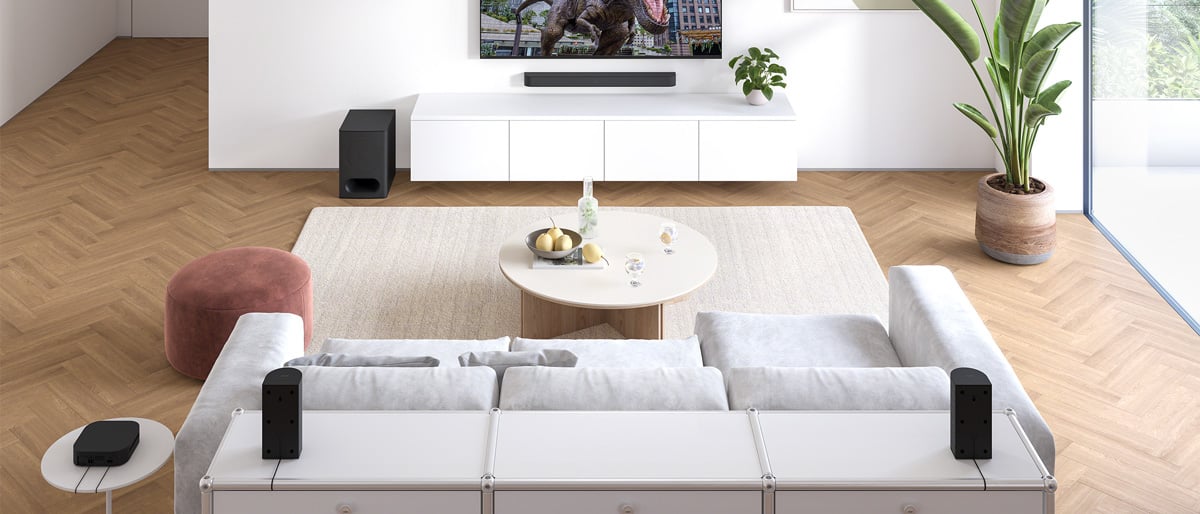
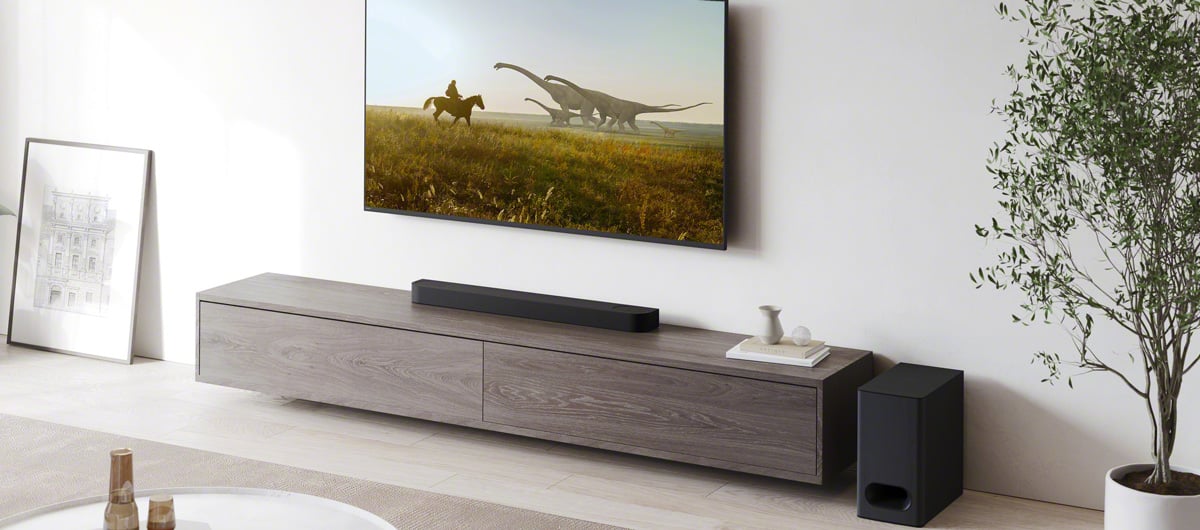
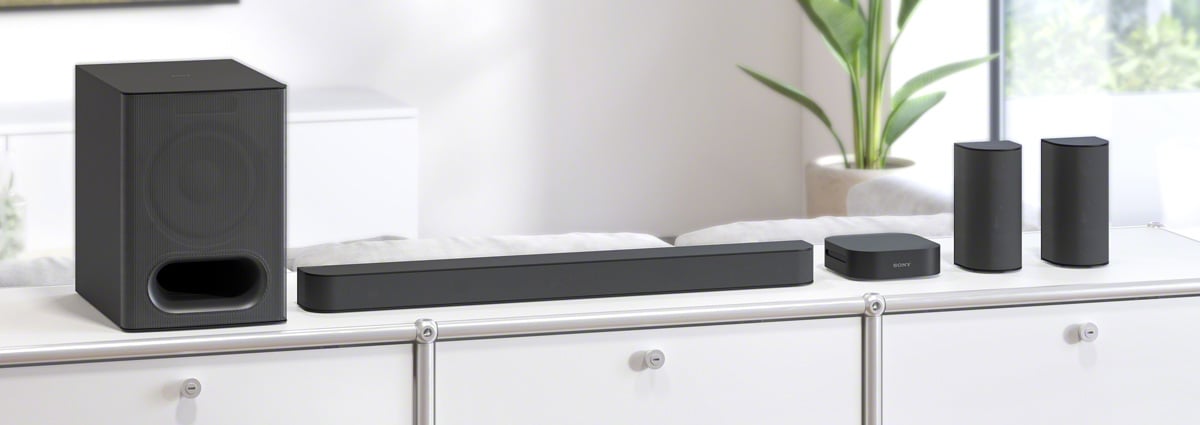
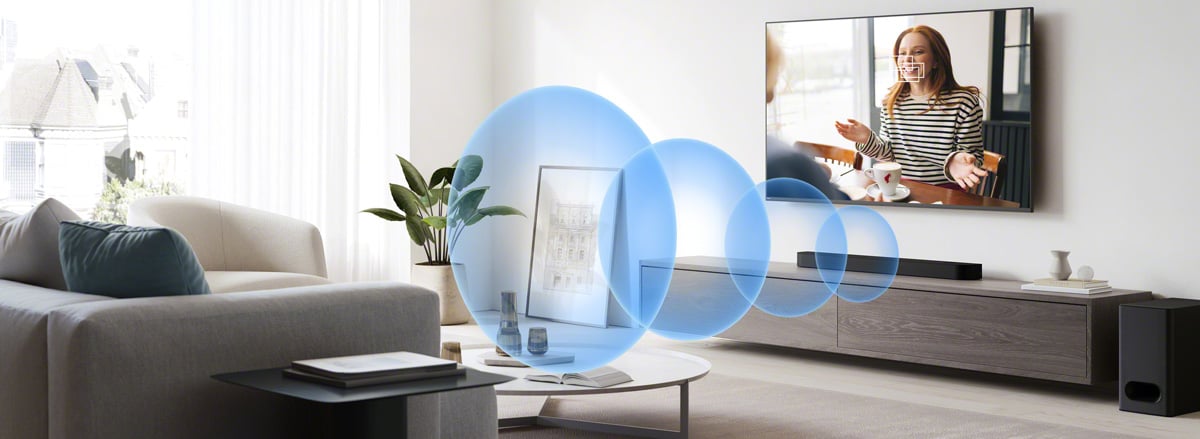
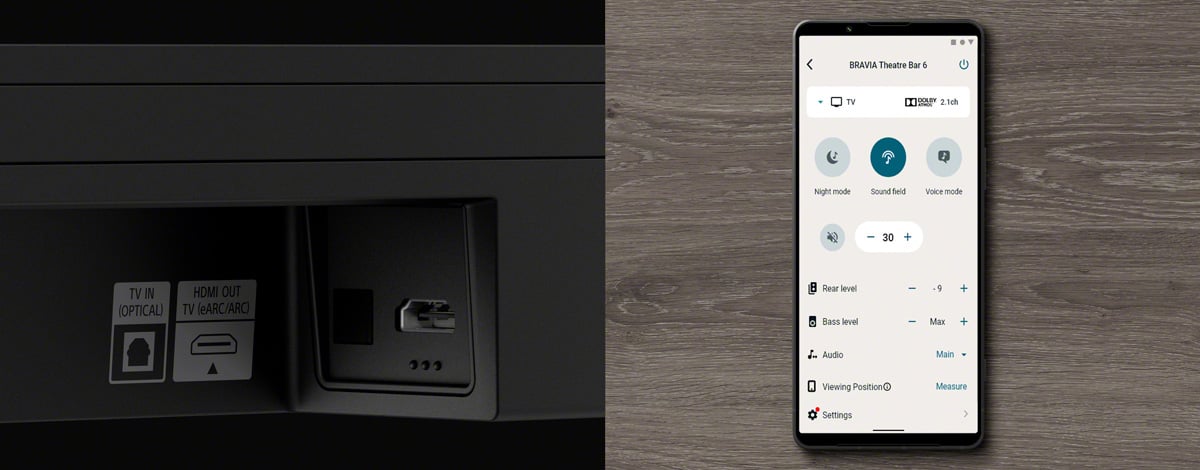
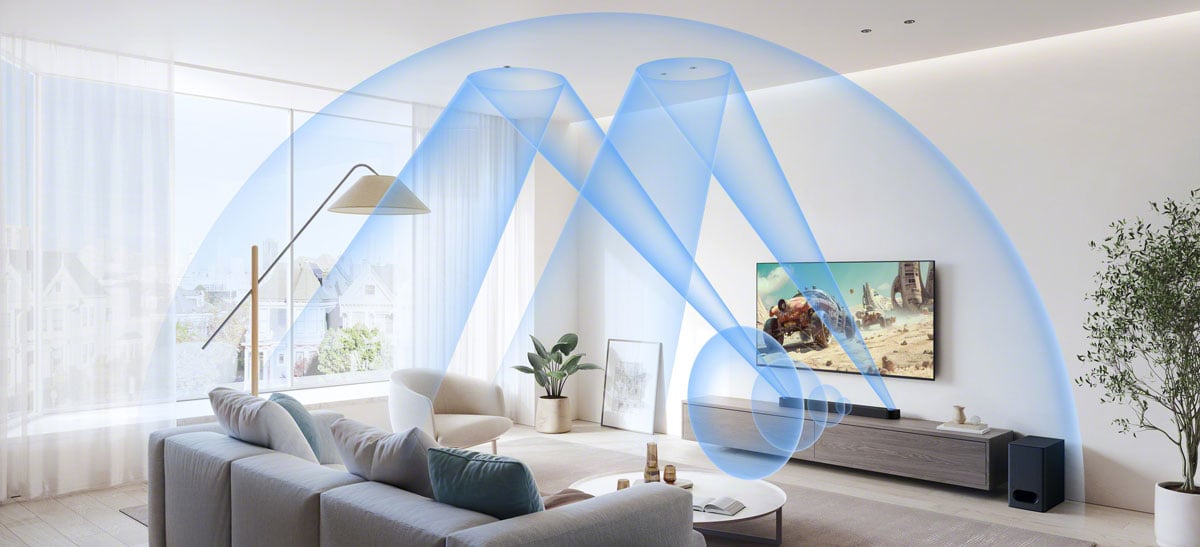
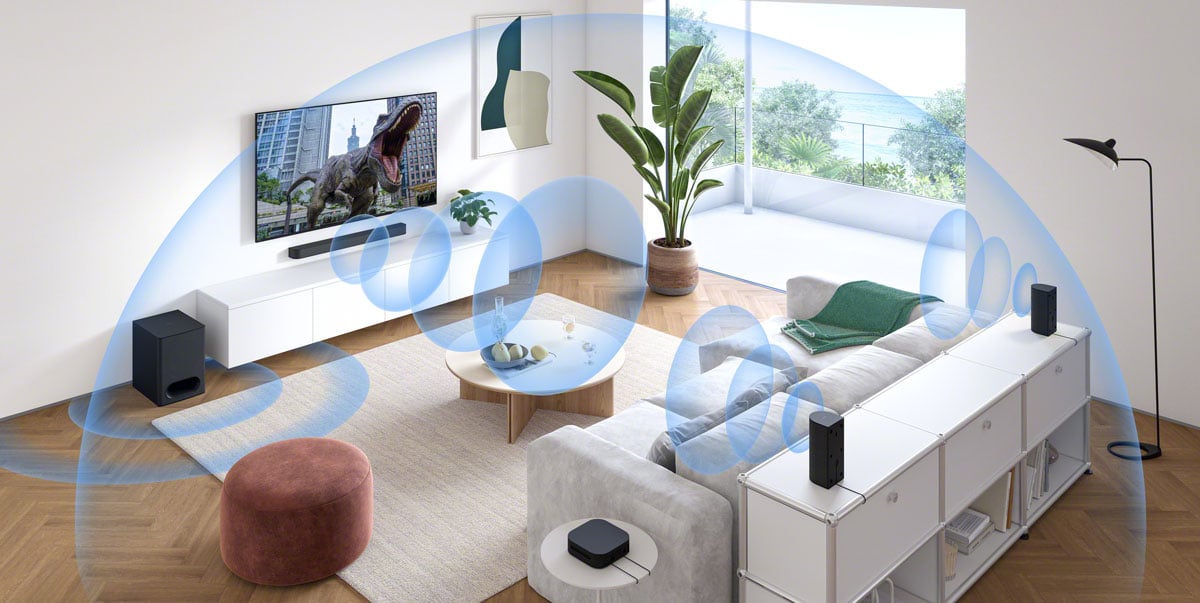

In this article, we’re going to take a look at the new Sony BRAVIA Theater Bar 6 soundbar and the Sony BRAVIA Theater System 6. Both systems offer immersive sound with Dolby Atmos and DTS:X, but they take very different approaches to achieve that goal. We’ll go over all the features and technology packed into each system, then help you figure out which one makes the most sense for your setup.

Let’s start with the design of Bar 6, which sits below the Bar 8 and Bar 9 in the Sony soundbar lineup and is also smaller than those models and the System 6. We'll say right off the bat that the Bar 6 is best suited for a smaller room. If you’re looking for something more powerful to fill a medium to large room, we recommend checking out the Bar 8 or Bar 9. We have a full review linked below. But if you want impressive sound in a small package, the Bar 6 is worth learning more about.
At just under 38 inches wide, 2.6 inches tall, and weighing about 7 pounds, its compact design fits easily under most TVs or mounts neatly on a wall, making it a perfect fit for smaller spaces. It has a matte black finish with rounded corners and a metal mesh grille that covers both the front and top of the bar. There’s no full display on the front, just a small LED indicator light that turns on when the soundbar powers up, changes color when adjusting volume, and glows blue when connected via Bluetooth. However, if that light is distracting, there’s an option to turn it off completely.
Inside the Bar 6 there are 5 total speakers that include the left, center, right, and two up-firing height speakers and it comes with a wireless subwoofer. The included subwoofer uses a 6-inch driver, is front-ported, and weighs about 17 pounds. It measures approximately 8.3 inches wide by 15.2 inches tall and 15.2 inches deep, so it’s relatively compact and easy to fit in your room without standing out or taking up much space.
On the back of the Bar 6, you get a port for power, an optical connection, and one HDMI eARC connection. One thing we wish more soundbars had was HDMI passthrough. Unfortunately, the Bar 6 doesn’t include it. That might be a drawback for gamers or people with multiple devices who rely on passthrough for convenience. However, this system is really for people who want quality sound without a complicated or intrusive setup. It works well for someone in a smaller room or a secondary setup where your devices plug into the TV and the soundbar handles audio via eARC.

Moving to the Theater System 6, this unit builds on the Bar 6 by adding two compact wireless rear speakers and a more powerful subwoofer. The rear speakers are small enough to place discreetly on shelves or mount on the wall. Both rear speakers need to connect to an included hub that acts as the amplifier and connection unit that allows them to wirelessly sync with the rest of the system. So, while they aren’t completely wireless, you only need to run short cables from each speaker to the small hub, which we recommend placing somewhere in the middle, behind your listening position. While we wish these wireless speakers had everything built into them so you didn’t need to run cables to the hub at all, we do think this is a trade off that’s worth it to keep the rear speakers as small as possible.
Another difference from the Bar 6 is the location of the connections. What we found interesting was that the actual inputs for this system are located on the rear of the subwoofer, not on the soundbar itself. To set this up, the HDMI eARC, optical, or 3.5mm aux cable from your TV plugs directly into the back of the subwoofer. The subwoofer then sends the signal to the soundbar through a wired connection and to the wireless hub for the rear speakers. This is an interesting setup because it limits where you can place the subwoofer due to the fact that you’re constrained by running the wires from your TV and the soundbar itself to the sub. Most likely, you’ll want to place the subwoofer right by your TV credenza so the wires reach and you don’t have to worry about hiding them across your room. We don’t love the way this is set up, but if you plan to have the subwoofer right next to your TV anyways, you most likely won’t find this to be an issue at all.
Inside the System 6 soundbar, there are still five speakers, but in a different setup than the Bar 6. They’ve removed the up-firing Atmos speakers and placed left, right, and center woofers on the front with dedicated tweeters on the far left and right to help spread the sound around the listener. This came as a surprise to us because we’re fans of up-firing speakers on soundbars. They typically do a much better job at emulating height effects rather than relying solely on processing to trick your ears into hearing vertical sound. This is where the Bar 6 has a noticeable advantage compared to the System 6. Its Atmos effects are just much better thanks to its up-firing speakers. These work best when the soundbar has nothing obstructing those speakers and your ceiling is ten feet or shorter with nothing in the way to block the sound from bouncing back down to you. However, when it comes to the immersiveness of the bed layer sound, the System 6 knocks it out of the park. The Bar 6 just simply cannot match the actual speakers playing from behind you that the System 6 has.

However, to combat the fact that the Bar 6 is missing rear speakers and the fact that the System 6 is missing height speakers, they both utilize Sony’s S-Force PRO Front Surround to widen the soundstage and the Vertical Surround Engine to simulate a more expansive audio field above you. Again, this is advanced processing that makes the sound seem like it's coming from all around you, and it does a really good job. But if you’ve ever sat in a Dolby Atmos theater with dedicated speakers, you’ll instantly know that it’s just not the same quality. With that said, for the price and the size of both of these systems, they create a very fun and somewhat convincing experience thanks to Sony’s advanced tech.
One of the most helpful features we found on both of these units is Voice Zoom 3. When paired with a compatible Sony BRAVIA TV, it uses artificial intelligence to isolate dialogue from background effects.

This is perfect for those hard-to-hear scenes or when characters speak softly. The feature can be customized based on your preferences and makes a big difference in usability. If you don’t have a Sony TV, you can still access a basic voice mode through the app or remote. We also love that you can use the remote that comes with it or access quick menus within a compatible Sony TV and remote. But there is still a basic voice mode within the app and on the remote that you can use if you are having trouble hearing the voices.
Now, one thing neither model includes is built-in Wi-Fi. That means no AirPlay, Chromecast, or direct Spotify Connect support. You’ll need to stream through your TV, your phone via Bluetooth, or a connected device like an Apple TV. It also means firmware updates need to be done manually using a USB stick, which feels a little outdated compared to more connected systems.
For setup and making changes without the remote, you can use the Sony BRAVIA Connect app. Setup through the app is incredibly easy. It walks you through pairing the subwoofer and entering a few key room measurements, like the distance from your seating position to the soundbar and subwoofer, and the height between the soundbar and ceiling. Instead of running a full mic-based calibration, it just asks you to pick from a few preset distances. The app also lets you toggle between virtual surround modes like Sony’s Vertical Surround Engine, Dolby Speaker Virtualizer, and DTS Neural:X. In our testing, the Vertical Surround Engine performed the best for us with both units. It gave the sound a noticeable sense of height and depth without dedicated ceiling speakers. But we always recommend trying them all to see what works best in your room.

Now, from the moment we powered on the Bar 6, it sounded much bigger than expected. The bar itself isn’t that large, but the soundstage is quite wide and immersive for its size. The mid-bass hits nicely with a satisfying thump, especially if you bump the bass setting up a couple of notches. We found +2 or +3 to be a sweet spot. Directional effects track smoothly across the front stage, and the system holds up well even without dedicated surrounds. The voice mode helps when dialogue is getting lost in the mix, but we generally preferred leaving it off unless we were watching something with really muffled vocals. Still, Sony has always done well with dialogue clarity, and this bar is no exception. The subwoofer holds its own and definitely makes a huge difference to the overall sound. Sony’s unique upmixer can also enhance older content, making low-quality audio sound much more immersive. This is great for DVDs or older TV shows that weren’t recorded in surround formats. Overall, for the size and price of this unit, we were impressed with what it was capable of.

The Theater System 6, on the other hand, with it’s more traditional 5.1-channel setup with a more powerful subwoofer was much more immersive when it came to the surround sound experience from the bed layer of speakers. We heard footsteps creeping behind us in horror films and bullets whizzing past during action scenes that really just brought the movies to life. The rear speakers make a big difference in realism. While it doesn’t have up-firing speakers for true vertical sound, Sony’s sound processing tech still delivers a relatively convincing Atmos experience. It just is not quite as good as the Bar 6.
In addition, the System 6 features a multi-stereo mode, which plays full-range audio from all the speakers at once. It’s perfect for parties or casual listening where you want music spread evenly through the room. Like the Bar 6, it includes integrated keyholes for easy wall mounting.

Like we mentioned before, the setup for the System 6 was a bit more involved than the Bar 6. You have to find good locations for your rear speakers, run wires to the hub between them, set your subwoofer close to your T,V and connect the TV and soundbar to the subwoofer to get it all ready to go. Ideally, the rear speakers should be positioned just behind your main seating area at ear level and angled slightly inward. That might mean investing in stands or wall mounts, which adds a little more work and possibly cost. But once you get it right, the payoff is worth it. The sense of immersion, especially in action movies or games, is significantly deeper than what a soundbar alone can produce. The app still does a really good job of walking you through the connections, and once you have everything placed, it’s relatively easy to start listening.
So, who should buy the Theater Bar 6? It's best for someone who values clean design, easy setup, and compact living. It’s a great solution for smaller rooms or for people who primarily stream content and want the benefits of Dolby Atmos without the extra gear. The up-firing speakers do a good job creating spatial effects, and the system’s simplicity is one of its strongest selling points. The included subwoofer helps it pack a punch during action movies and will fit great in an office or smaller bedroom where you want sound that is better than the speakers built into your TV.
On the other hand, the Theater System 6 is made for people who want a more true surround sound system, but still in a relatively compact package. It’s ideal for rooms that have a bit more space and allow for the placement of rear speakers behind your listening position. The rear speakers make a big difference, and the larger subwoofer delivers more impactful low-end rumble. It's the better pick if you're aiming for a more realistic bubble of sound while watching movies without breaking the bank or packing huge speakers into a small space.
And if you’re wondering how these compare to a more traditional home theater system with a receiver and wired speakers, the answer really comes down to priorities. If you want ultimate control and the best possible sound quality, separates still win. But for most people, these Sony systems get you close to that experience with a fraction of the cost and complexity.
Either way, both systems are major upgrades from TV speakers, and both come packed with Sony’s signature sound processing tech. The choice really comes down to your space, your habits, and how much immersion you want. The Bar 6 excels at doing more with less. The System 6 goes all in on surround sound. Either way, you’re getting a well-built, great-sounding product backed by Sony’s reputation for quality. If you're ready to push your audio experience even further, models like the Theater Bar 8 and 9 offer even more power and flexibility. They could be worth the splurge if you’re building out a serious home media setup.
If you have further questions, contact our experts via chat, phone, or email. Or simply visit one of our world-class showrooms to experience speakers, projectors, TVs, and everything in between for yourself before you make a purchase!
If you’re planning your home theater or media room, check out our Home Theater Design page, where we have everything Home Theater related, including our FREE Home Theater Design Tool.
When you buy from Audio Advice, you’re buying from a trusted seller since 1978. We offer Free Shipping, Lifetime Expert Support, and our Price Guarantee. We look forward to serving you!
You'll be among the first to know about product launches, exclusive online deals, and the hottest audio trends.


